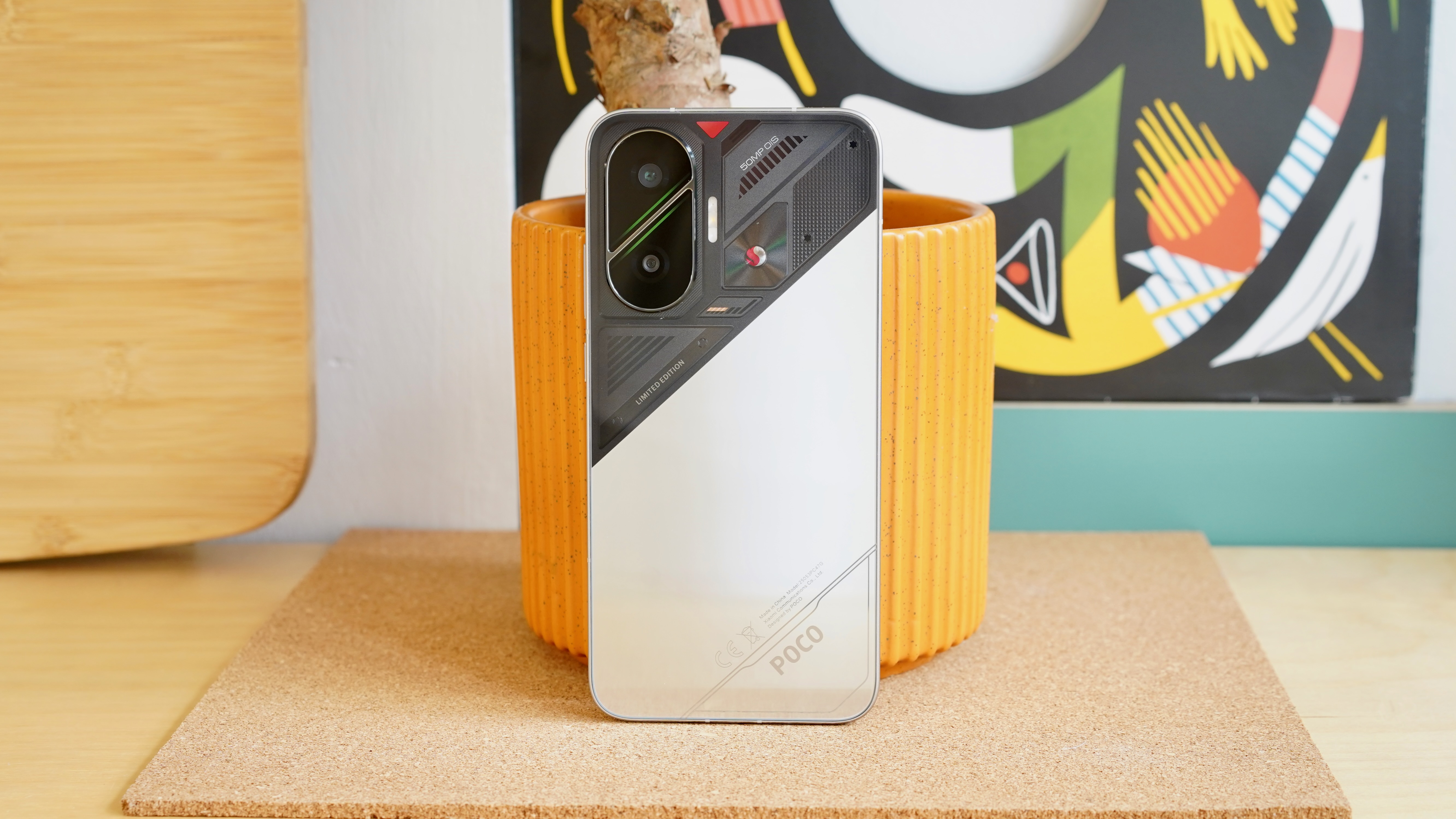
Poco F7: Two-minute review
After the flagship-approaching aspirations of the Poco F7 Ultra, the Poco F7 marks a welcome return to outright affordability. It hasn’t had to sacrifice much in the way of performance either, with the new Snapdragon 8s Gen 4 providing an impressively rapid experience.
For less than £400, you’ll struggle to find a phone that’s built better. With a metal and glass construction, and full IP68 certification, this phone is reassuringly solid in the hand – though it’s also rather bulky, and the design of the Silver model is an acquired taste.
Some of the extra bulk can be attributed to the choice of a 6500mAh battery, which is one of the biggest to be found anywhere. It produces genuinely impressive stamina, and 90W wired charging isn’t bad at all either.
The display is bigger than we've grown accustomed to from the brand, but it remains a sharp, bright, and generally well-balanced panel.
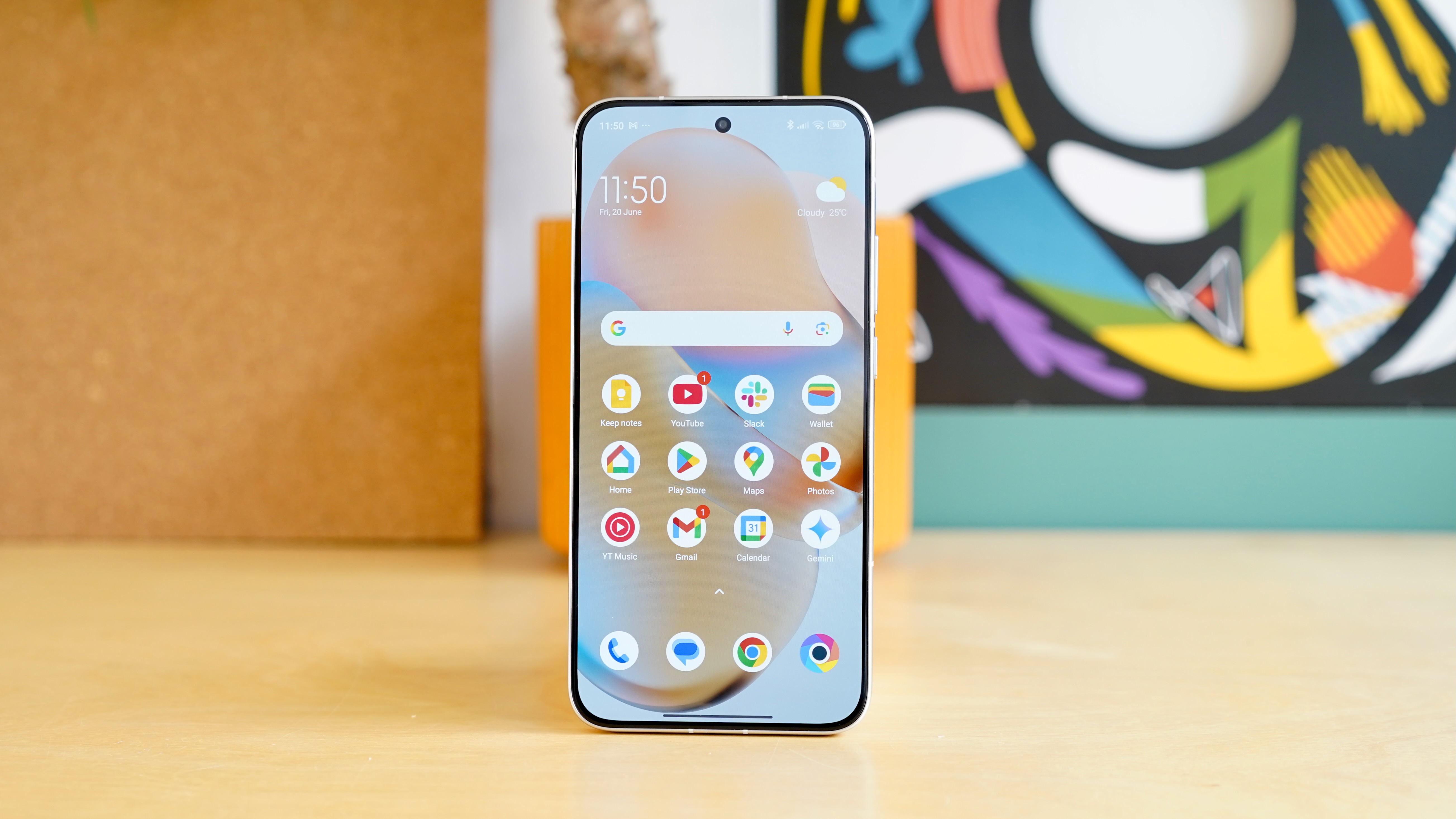
It’s clear where Xiaomi’s priorities lie with the Poco F7, and that results in a camera set-up that fails to impress or excite. The 50MP main camera will will do a job in good conditions, but you can get a more complete photographic experience for similar money in the Honor 400 or the Nothing Phone (3a) Pro.
The company’s HyperOS continues to underwhelm, too, with a cluttered layout and way too much bloatware. The company pays lip service to AI features, but the implementation isn’t the most elegant we’ve ever seen.
All in all, the Poco F7 feels like a better buy than its Ultra brother, with similar strengths – and weaknesses – at a much keener price.
Some of those aforementioned rivals are more elegant and arguably better balanced, but if performance and stamina (not to mention ruggedness) are priorities, you’re unlike to do better for your £389.
Poco F7 review: price and availability
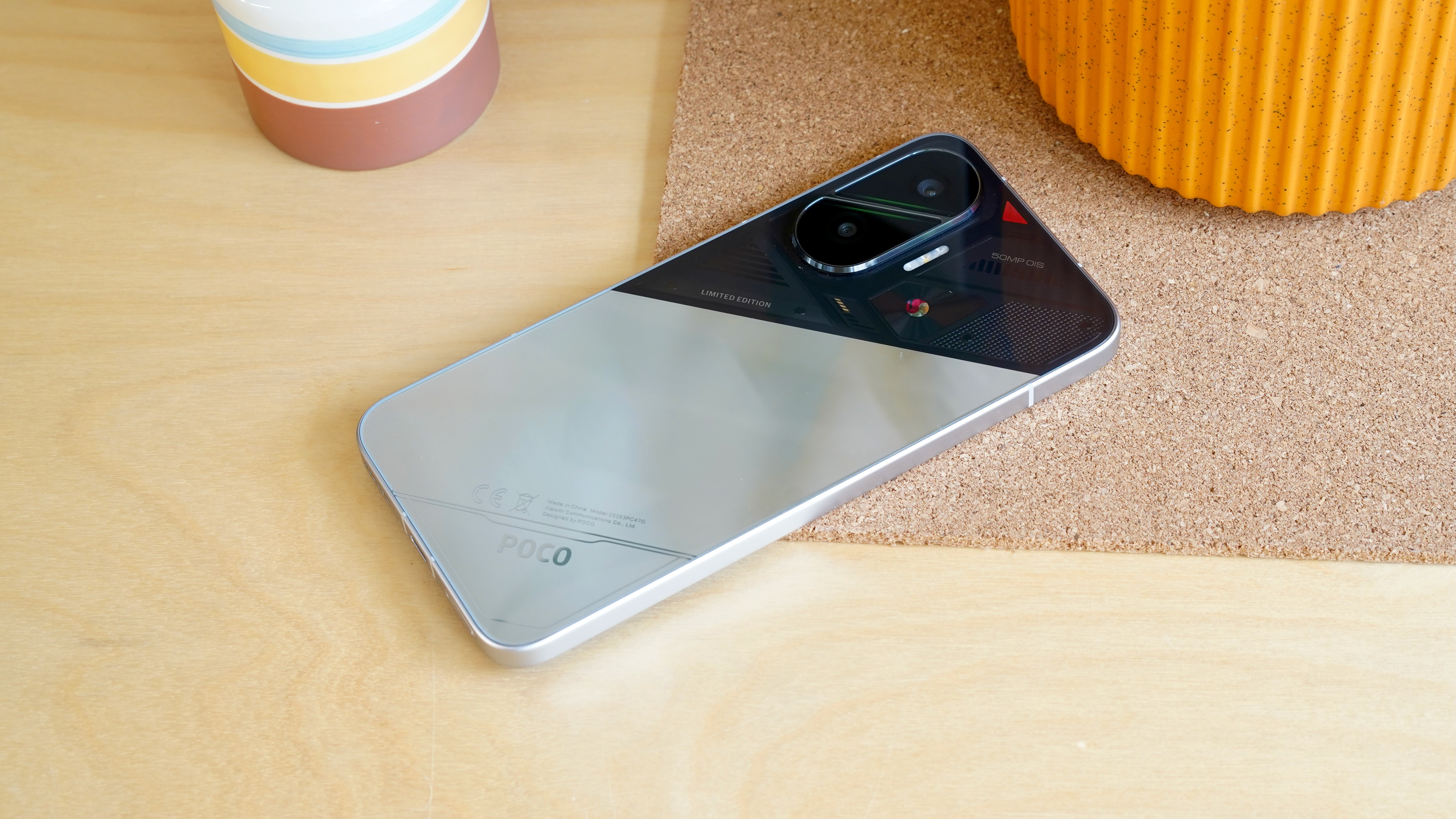
- Released in June 24 2025 for £389/$399 (12GB/256GB model)
- 12GB/512TB model costs £429/$449
- Not available in US or Australia
The Poco F7 launched on June 24, 2025, with availability across the UK and Europe.
Pricing starts from £389/$399 for 256GB of storage. The step-up 512GB model (with the same 12GB of RAM) costs £429/$449. Xiaomi always supplies dollar pricing, even though it doesn’t sell its phones to the US.
That makes the Poco F7 between £10 and £20 cheaper than its predecessor, the Poco F6, which is refreshing to see.
It also means that the phone undercuts the likes of the Google Pixel 9a and the Samsung Galaxy A56 by more than £100, and is a closer rival to the Samsung Galaxy A36 and the Honor 400. The £449 Nothing Phone (3a) Pro also stands out as a key competitor.
As is often the case with Poco phones, you can pick the Poco F7 up at a £70 Early Bird discount if you’re quick.
- Value score: 4.5 / 5
Poco F7 review: specs
Dimensions: |
163.1 x 77.9 x 8.2mm |
Weight: |
215.7g |
Display: |
6.83-inch 1.5K (2772 x 1280) up to 120Hz AMOLED |
Chipset: |
Qualcomm Snapdragon 8s Gen 4 |
RAM: |
12GB (LPDDR5X) |
Storage: |
256GB / 512GB (UFS 4.1) |
OS: |
Android 15 with HyperOS 2 |
Primary camera: |
50MP 1/1.95-inch sensor w/ OIS |
Ultra-wide camera: |
8MP sensor |
Front Camera: |
20MP sensor |
Battery: |
6,500mAh |
Charging: |
90W wired |
Colors: |
White, Black, Cyber Silver Edition |
Poco F7 review: design
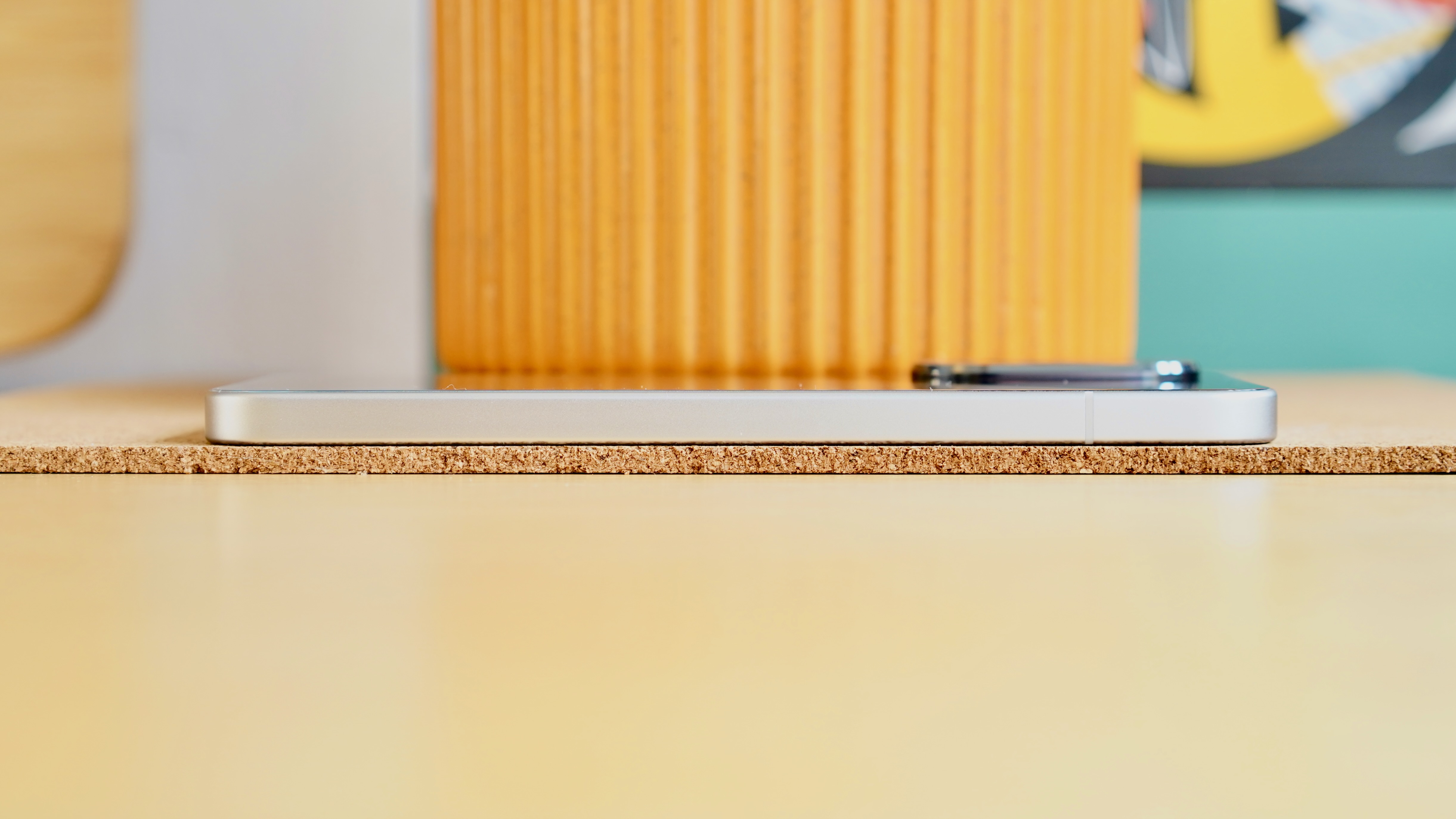
- Another big, flat Poco design
- Cyber Silver Edition has gaming phone vibes
- Impressive IP68 dust and water resistance
Following on from the Poco F7 Ultra, the Poco F7 brings another big, flat design. At 163.1 x 77.9 x 8.2mm and 216g, you’ll always know when it's in your pocket.
While it’s quite a bit bigger and heavier than the Poco F6 before it, however, it’s a more premium design. That extends to the choice of materials, with an aluminum alloy frame and a glass (not plastic) back cover.
It’s a tough cookie, too. Flagship-level IP68 dust and water resistance makes a welcome return, but Xiaomi is also making noises about the phone’s bending resistance rating of up to 70kg². I didn’t dare put this one to the test, but it should be nice and resistant to those ‘plonk yourself down with phone in back pocket’ incidents.
In terms of the look of the Poco F7, it’s another vaguely iPhone-shaped device with dead-flat surfaces and curved corners. I think the white and black models look quite classy, if a little boring – at least from pictures.
I wasn't sent either of those models, however. Instead, I got the limited Cyber Silver Edition, which completely flips that script: it looks a little cheap, but it’s certainly not boring.
Xiaomi has split the back of the phone at a jaunty angle, with the bottom half(ish) of the phone taken up by a shiny silver finish and the top half taking on a printed circuit board effect. It’s somewhat redolent of a gaming phone such as the Redmagic 10S Pro, which isn’t necessarily the kind of association Xiaomi should be encouraging.
It screams ‘performance’, yes, but it’s also likely to make grown adults feel self-conscious whenever they pull the phone out in public. It’s a shame we didn’t get more of Poco’s signature experimenting with the colour yellow, which can be quite effective in helping it to stand out from the crowd.
Suffice to say, this overall reflectiveness makes the Poco F7 a fingerprint magnet. And also, for the record, a total nightmare to photograph.
- Design score: 3.5 / 5
Poco F7 review: display
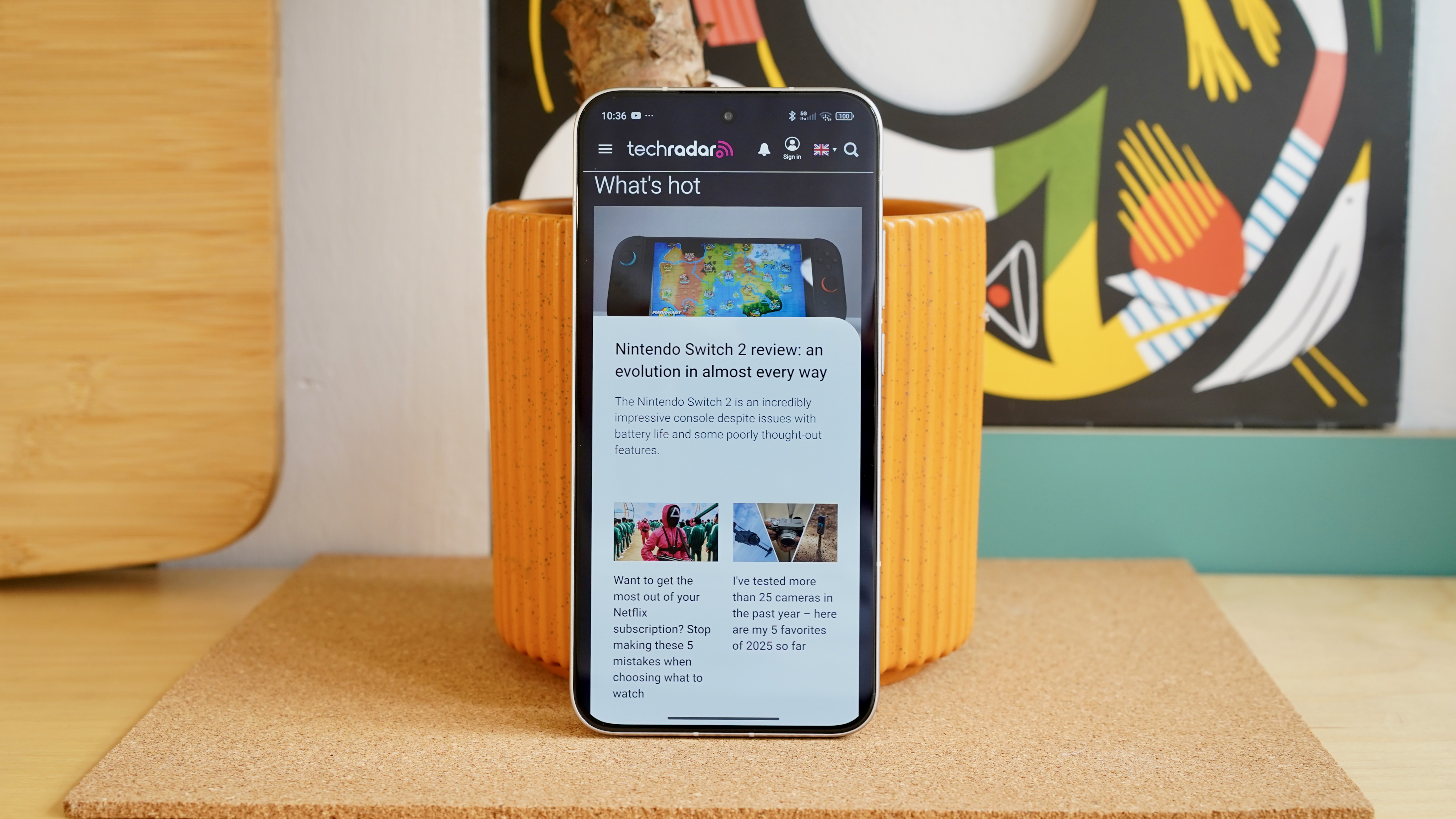
- 6.83-inch AMOLED (2772 x 1280) with 120Hz refresh rate
- Decent 3200 nits peak brightness, 1700 nits HBM
- Well calibrated colours
Xiaomi’s budget sub-brands always turn up with excellent, balanced AMOLED displays, and the Poco F7 maintains the winning run.
It’s larger than that of both last year’s Poco F6 and this year’s Poco F7 Ultra at 6.83 inches, while a 2772 x 1280 ‘1.5K’ resolution proves nice and sharp.
Just like its Ultra brother, this screen maxes out at 3200 nits of brightness in limited HDR scenarios, which is an improvement on the Poco F6’s 2400 nits. It hits a slightly lower (but still solid) 1700 nits in high brightness mode than the Ultra, which will kick in when direct sunlight beats down on it.
There’s a 120Hz maximum refresh rate here, as you'd expect. We expect that even of cheap phones these days, unless you’re talking about Apple.
This screen is covered in Corning Gorilla Glass 7i rather than the toughened "Poco Shield Glass" of the Poco F7 Ultra, so those aforementioned tough credentials presumably only extend so far.
All in all this is a big, bright, sharp and colour-accurate display, which is really as much as you can ask for in a mid-range phone.
- Display score: 4 / 5
Poco F7 review: cameras
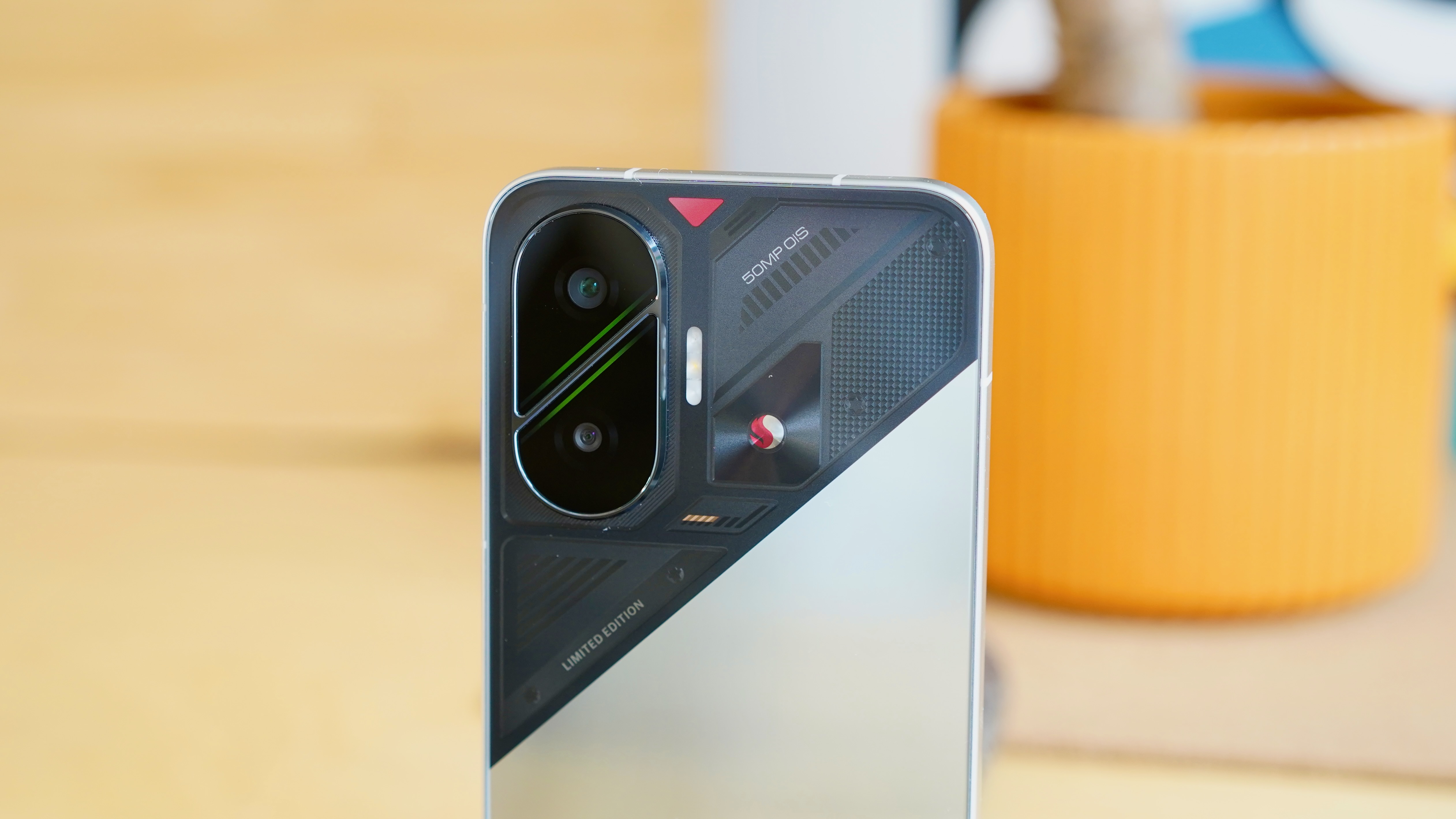
- 50MP main sensor produces solid but unspectacular shots
- 8MP ultra-wide
- No telephoto
- 20MP front camera
From what I can see, the Poco F7 features the same basic camera set-up as last year’s Poco F6, as well as the lesser Poco X7 Pro.
That means a dual camera system led by a 50MP Sony IMX882 sensor with a wide f/1.5 aperture. You also get a humble 8MP ultra-wide, and a 20MP front camera. There is no dedicated telephoto camera.
Unsurprisingly, our comments regarding the Poco X7 Pro camera broadly apply here. The Poco F7 does benefit from packing a Snapdragon 8s Gen 4 processor with its superior image processing, but the characteristics are similar.
That is, you'll get clear and bright images in good lighting, with nice vibrant colours. Once the light drops and Night mode comes into play, shots are solid, but not quite as clear as I would have liked, with a hint of grain to those dark skies.
Don’t expect miracles from the 8MP ultra-wide. It obviously lacks the detail of the main sensor, as well as the same level of contrast, and there’s a slight over-processed look as Xiaomi looks compensate for its hardwired deficiencies.
Zoomed shots look fine at 2x, putting the extra pixels from that lead sensor to good use without much visible grain. Things start getting fuzzy at 5x, however, while 10x is unusably blurry.
There are AI features here, of course. AI Erase is the now-familiar tool that lets you erase background elements. AI Image Expansion literally speculates on what might be outside of the frame and sketches it in – convincingly, if incorrectly. As the name suggests, AI Sky lets you change the scene to a sunnier or cloudier day, adjusting the tone accordingly.
AI Beautify, meanwhile, offers the dubious ability to ‘improve’ your personal looks, removing pores and blemishes (wrinkle removal requires downloading), and altering your body shape. It can even pimp up your pets. Suffice to say, beyond giving it a quick test, I wanted none of it.
Selfie quality from the 20MP front camera is adequate, once you bump the default beautifying effect down to zero. You'll find that the detail level is adequate and skin tones are rendered reasonably naturally, but it struggled with dynamic range on bright days.
4K video at 60fps makes a return from the Poco F6, and the footage I captured was reasonably smooth without being exceptional.
- Camera score: 3 / 5
Poco F7 review: camera samples





Poco F7 review: performance
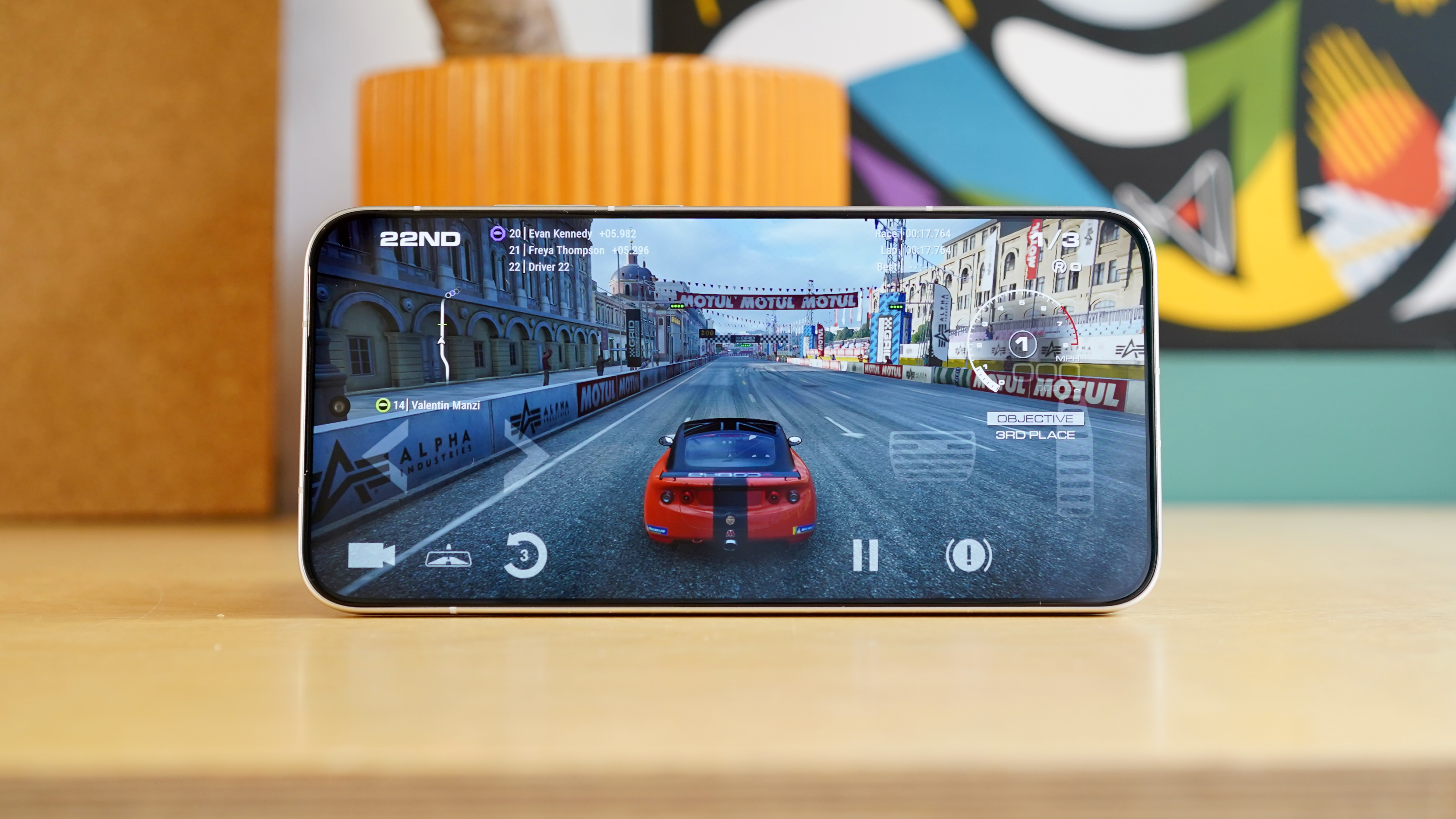
- New Snapdragon 8s Gen 4 is a strong performer
- 12GB RAM as standard
- 256 or 512GB of storage
Xiaomi has gone with an interesting choice of processor in the Snapdragon 8s Gen 4. This is a brand new chip that falls well short of the giddy heights offered by the Snapdragon 8 Elite, but still turns out broadly flagship-level performance.
Nothing is using this very chip in its Phone (3), which is going to be priced at around £800, so it’s impressive to find it here in a £389 phone.
Sure enough, in the Geekbench 6 benchmarking tool, it comfortably beats the Pixel 9a (and the Pixel 9 Pro for that matter) on raw CPU performance, and positively decimates the Samsung Galaxy A56.
GPU performance using the GFXBench tool doesn’t prove as impressive, with both of those rival phones beating the Poco F7 in on-screen tests. It’s worth reminding ourselves that Xiaomi’s phone has a much sharper display than either of those phones, of course, which invariably takes a toll on GPU performance.
The main thing to note is that it’s well up to the job of gaming. It’ll actually play console racer GRID Legends – which h is often only playable on high-end phones – and smoothly at that.
It’s good to see that Xiaomi has gone with a fixed 12GB of RAM here, regardless of the storage capacity you opt for (256 or 512GB).
We should also note that the company is using a 6000mm² 3D Dual-Channel IceLoop System for cooling the aforementioned processor, with “the biggest Loop Heat Pipe ever used in a Poco device”. I did find that the phone heated up quite significantly after running those GPU tests, but this isn’t unusual for such a demanding task, and this was during one of the hottest days of the year so far.
- Performance score: 4.5 / 5
Poco F7 review: software
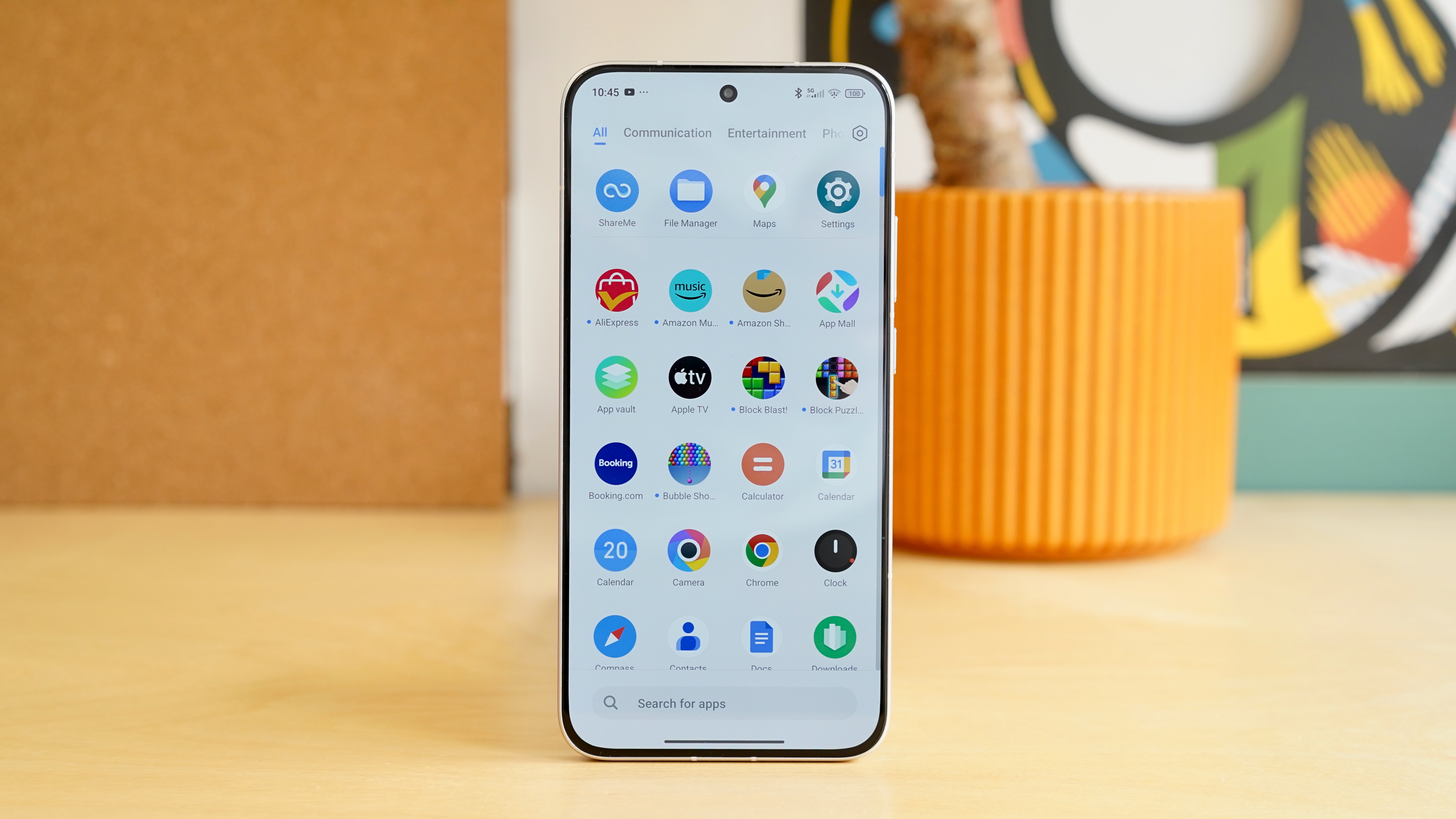
- Clumsy UI with lots of bloatware
- 4 years of OS updates and 6 of security patches
- Hit and miss AI provision
Xiaomi might have attempted to do something a little different with the Poco F7’s hardware, but the software provision is very familiar indeed.
That’s completely natural – no manufacturer makes sweeping UI changes between models – but it also means that all of my old criticisms of Xiaomi’s HyperOS (and prior to that, MIUI) remain.
For the record, you’re getting HyperOS 2 layered on top of Android 15. Just as I noted with the Poco F7 Ultra, this is a UI that responds nice and snappily when there’s a half-decent processor involved, as there is here.
While it’s a well-tuned and extremely customisable UI – minus a slight but persistent instance of lag when scrolling from the Google Feed back to the main home screen – HyperOS continues to frustrate. It’s jam-packed with extra apps, both from Xiaomi’s own stable and from third party developers.
Even after laboriously deselecting all of Xiaomi’s ‘Recommended apps’ at the set-up stage – all of which look bafflingly terrible – I still found the second home screen playing host to the Temu shopping app, Facebook, Spotify, Microsoft OneDrive, Netflix, and the Booking.com app.

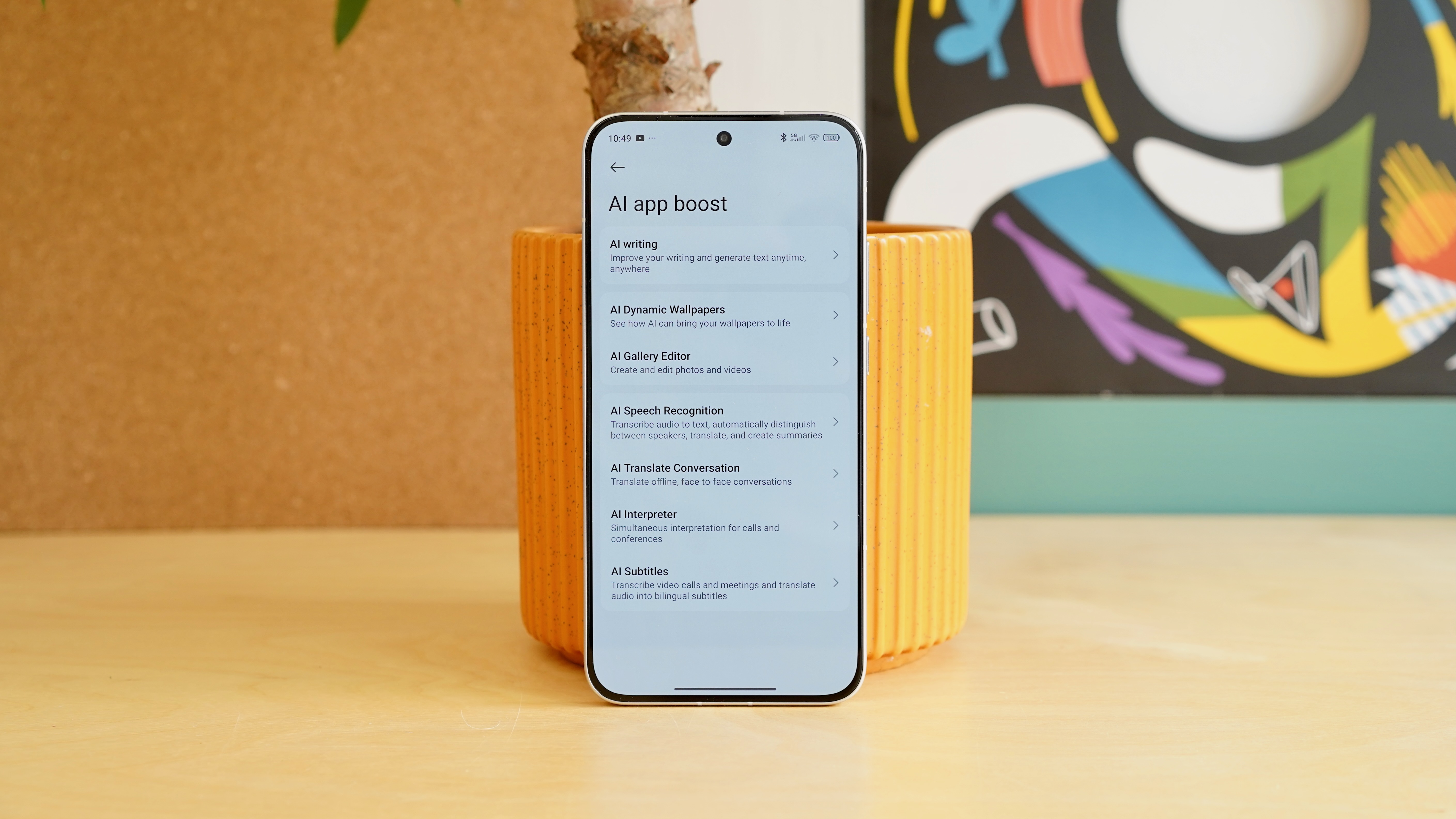
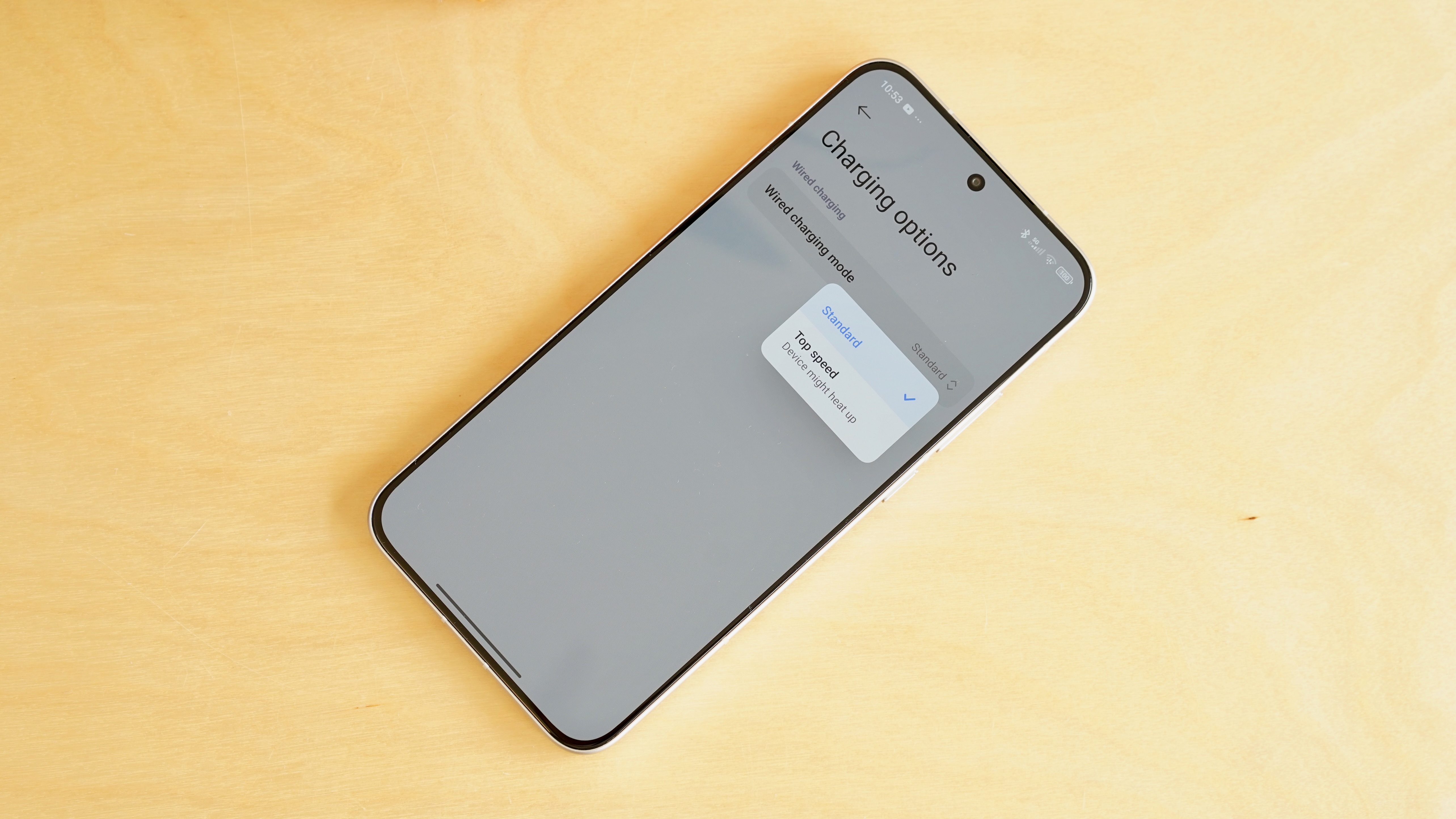
Bring up the app tray and there’s more in the shape of AliExpress, Amazon Music, Amazon Shopping, TikTok, and a smattering of crushingly basic games.
Xiaomi’s own Theme store is a strange one. From a certain perspective, it grants more wallpaper and lock screen personalisation options than virtually any other manufacturer. But there’s an awful lot of tat in there, and not all of it is free to download.
Simply finding some basic system alternatives to the default wallpaper remains more difficult than it should, and that sense of friction pervades HyperOS.
As with the Poco F7 Ultra, Xiaomi is offering four Android OS upgrades and six years of security patches. It’s a pretty decent provision all things considered, covering the likely natural life of the phone and then some. However, it falls short of Google’s (seven years) and Samsung’s (six years) own extensive update promises.
As with the Ultra model, the Poco F7 comes with plenty of AI tools of varying levels of usefulness. AI writing can summarise text, AI Interpreter will translate calls in real time, and AI subtitles will transcribe calls and meetings. There’s the usual suite of photo editing tools (after you’ve installed the relevant plug-ins), and Google Gemini is only a long power button press away.
Much of this has become a box-ticking exercise for manufacturers, and this isn’t the most intuitive or seamless implementation we've ever seen. With that said, those AI boxes have undoubtedly been ticked.
- Software score: 3 / 5
Poco F7 review: battery life

- Genuinely huge 6500mAh battery
- Up to 90W wired charging
- No wireless charging
If there’s one stand-out spec for the Poco F7, it’s the inclusion of a 6500 mAh battery. That’s a huge increase on the Poco F6’s 5000mAh battery.
In fact, short of the Red Magic 10S Pro and its predecessors – niche gaming phones one and all – this is the largest battery I’ve seen in a phone.
It’s a brute force way to extend the phone’s stamina, but it’s an effective one nonetheless. On one typical day of moderate usage, with 3 hours 45 minutes of screen on time, I was left with 70% – enough for a full second day without any stress whatsoever.
Indeed, I sailed right through the night without plugging the phone in, and by the end of a lighter second day with an hour less screen on time, the Poco F7 still had 29% left.
The Poco F7 supports the same 90W wired charging as its predecessor. Xiaomi claims it’ll go from empty to 80% in 30 minutes, but that’s only with the Quick Charge function active, and you’ll have to dive into the Settings menu and toggle that manually.
Straight out of the box, in its default configuration, I found that the phone would get to just 60% in 30 minutes. That’s still pretty good, especially when you consider the sheer size of that battery.
- Battery score: 5 / 5
Should I buy the Poco F7?
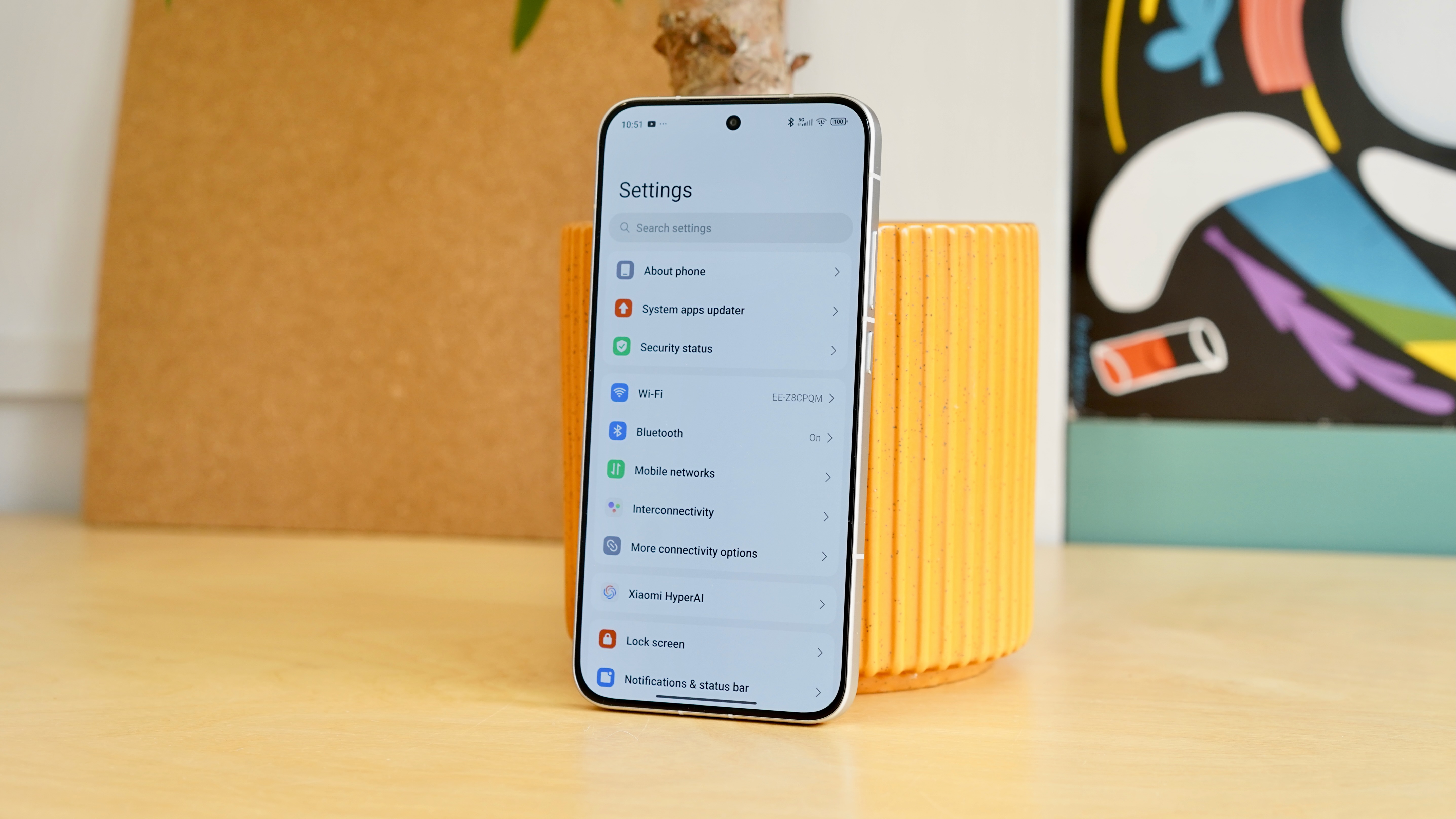
Attributes |
Notes |
Rating |
|---|---|---|
Design |
The Poco F7 is very well-built for its price, with IP68 certification and a high quality materials, though it’s also quite big, and the Cyber Silver Edition version is a little chintzy. |
3.5 / 5 |
Display |
The Poco F7’s 6.83-inch OLED is big and bright, with a shark ‘1.5K’ resolution. |
4 / 5 |
Performance |
The Snapdragon 8s Gen 4 is a capable runner, outperforming most fellow mid-rangers and even some flagship phones. |
4.5 / 5 |
Camera |
Cameras have never been a priority with the Poco range, and the Poco F7 doesn’t bring anything meaningfully new or impressive to the table. |
3 / 5 |
Battery |
With a huge 6500mAh battery, the Poco F7 will be able to last most people two days, while 90W wired charging is more than decent. |
5 / 5 |
Software |
HyperOS 2 is too cluttered, with way too much bloatware, but it is at least quite customisable. |
3 / 5 |
Value |
The Poco F7 is even cheaper than its predecessor, and undercuts some of our favourite mid-range phones by more than £100. The level of build quality and performance is impressive for the money. |
4.5 / 5 |
Buy it if...
Don't buy it if...
Poco F7 review: also consider
The Poco F7 offers some impressive specs for less than £400, and it doesn't have the field to itself.
How I tested the Poco F7
- Review test period = 1 week
- Testing included = Everyday usage, including web browsing, social media, photography, video calling, gaming, streaming video, music playback
- Tools used = Geekbench 6, GFXBench, native Android stats, 90W Xiaomi power adapter
Future Labs tests phones using a mix of third-party benchmark software and proprietary, real-world tests. We use Geekbench, CrossMark, JetStream, WebXPRT and Mobile XPRT, and 3DMark for performance testing. We test a phone's performance on video tasks using Adobe Premiere Rush. We also measure display color output and brightness.
For battery testing we perform proprietary tests that are the same for every phone, which enable us to determine how long it takes for the battery to run down.
☑️ 100s of gaming laptops reviewed
☑️ 15 years of product testing
☑️ Over 16,000 products reviewed in total
☑️ Nearly 200,000 hours testing tech
First reviewed: June 2025







